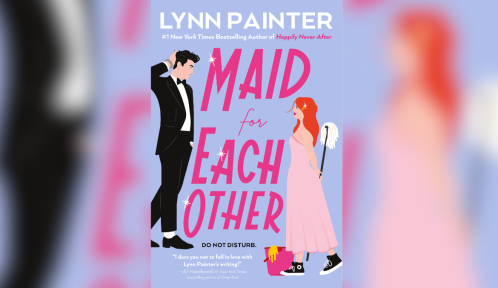Our editors independently select these products. Making a purchase through our links may earn Well+Good a commission
Feeling Disconnected From Your Partner? Make Sure Your ‘Emotional Bank Account’ Is in the Green
Learn from relationship experts about the emotional bank account, a framework to keep you on track to invest in your relationship.

They say Rome wasn’t built in a day, and the same can be said about strong relationships. Building—and maintaining—a healthy, fulfilling, and loving partnership takes consistent effort and attention over time. But while it requires effort, it doesn’t have to complicated. One framework that makes tending to your relationship easy to do and understand is the emotional bank account.
Experts in This Article
What is an emotional bank account in a relationship?
This analogy, which was first introduced by Stephen R. Covey, author of The 7 Habits of Highly Effective People: Powerful Lessons in Personal Change, refers to the amount of trust and goodwill you share with another person. It works on the assumption that building your relationship is like building wealth—more positive interactions help the relationship grow and prosper, while negative ones hinder it.
Famed relationship researcher John Gottman, PhD, found what he calls the “magic ratio”—it takes five positive interactions to counteract a negative one. This ratio supports the idea of emotional bank accounts: When you have more funds to tap, you’re better able to weather storms and deal with surprises and tough times, just like with a monetary bank account. “You want a couple to have a flourishing emotional bank account, meaning a lot of positive interactions, so that when there is a negative interaction, they’re not pulling in the red or in the negative,” explains certified Gottman Institute couples therapist Kimberly Panganiban, LMFT.
This isn’t to say that successful couples will never have conflicts that cause their emotional bank account balances to be lower—all couples argue and have obstacles they must work through. The key to successful lasting relationships is to make sure you deposit more than you withdrawal, so when you do have disagreements and arguments, there is a foundation of support and trust to help you deal with conflicts.
So how do you keep your emotional bank account in the green?
Both Panganiban and clinical psychologist Satira Streeter Corbitt, PsyD, who is also a certified Gottman Institute therapist, say doing kind, loving, considerate things for your partner consistently builds the relationship and strengthens it over time. Incorporating deposits into your day, just like making regular monetary deposits into your bank account, turn these efforts into habits so they stick even when life gets in the way.
“[Rituals of connection] are ways to to connect, pay attention to your partner, and to be there for them on a daily basis.”—Kimberly Panganiban, LMFT, certified Gottman Institute couples therapist
Deposits are any gesture that make your partner feel safe, loved, and respected. According to Panganiban and Dr. Corbitt, the specifics of this will vary based on your partner’s likes, preferences, and desires—the options for positive interactions that deposit into your emotional bank account in your relationship are endless and don’t have to be time consuming at all. They can include any act of intimacy, or what Panganiban calls “rituals of connection,” which “are ways to to connect, pay attention to your partner, and to be there for them on a daily basis,” she says.
For example, this can look like kissing your partner on their way out the door or helping them unload groceries from their car, or preparing your partner’s coffee or tea so it’s ready for them when they wake up, or making their favorite meal. Maybe your partner loves watching TV in the evening, so a deposit could be queuing up their favorite program and watching it with them before bed—the specific actions depend on the person. It also looks like giving compliments, spending quality time together, giving gifts, communicating respectfully—anything that builds the relationship in a positive way.
While this specifically is about incorporating small gestures into your day, it also includes things like date nights—but the key here is that those aren’t the only times you’re connecting with your partner. “It’s about spending time together and making sure we give compliments and appreciations, and that we show some type of affection so those small things can add up so we’re functioning off of a relationship that we’ve been intentional about devoting time and more energy to,” says Dr. Corbitt.
Do some deposits have higher value than others?
Not really, say Dr. Corbitt and Panganiban—the key is consistency here, rather than splashing out on sparing, but grand, gestures. “Knowing your partner and what feels meaningful and important to them helps you do the things that get more bang for your buck, so to speak,” says Panganiban. She adds that the one action that consistently lands well across the board though, is listening to and being emotionally available for your partner when they’re stressed or overwhelmed.
Withdrawals, on the other hand, are the gestures that aggravate your partner and make their day tougher. For example, maybe you’re grumpy in the morning and snap at your partner, or you forget to run an important errand that they now have to go do themselves. These are all the little annoyances and grievances that chip away at a relationship and build resentments. Keep in mind though that major instances of hurt, like abuse or infidelity, don’t count as withdrawals, says Dr. Corbitt, because “those are in a whole other realm—here we’re talking about the stuff we all do sometimes because we’re human, like those grouchy days or accidentally forgetting an anniversary,” she says.
So how does one build more positive interactions into their routine?
Through making consistent efforts. In fact, Dr. Corbitt advises the couples she treats in her therapy practice to hold a “state of the union” each week to reflect on what their week has been like, and “how their partner has poured into them and how their partner is seeing them.” Using Dr. Gottman’s 5:1 ratio, Dr. Corbitt says she encourages couples to share five positive and appreciated actions that happened over the course of the week, and one that wasn’t as welcome and can be an opportunity for growth.
“You give these five positives so your partner is clear that you are still looking for and focused on the good, but you’re also saying here’s one thing we can continue to work on,” says Dr. Corbitt. For example, a positive could be your partner made your favorite meal one night, while a negative could be that they left a mess for you to clean up. Communicating these needs consistently keeps everyone on the same page and helps build the positives into habits so they don’t stop happening, even when you’re busy.
So if you want to build a strong relationship with your partner, start thinking about this other bank account you have—and make sure it’s flourishing by planning nice gestures that show you care, even if they’re little things.










